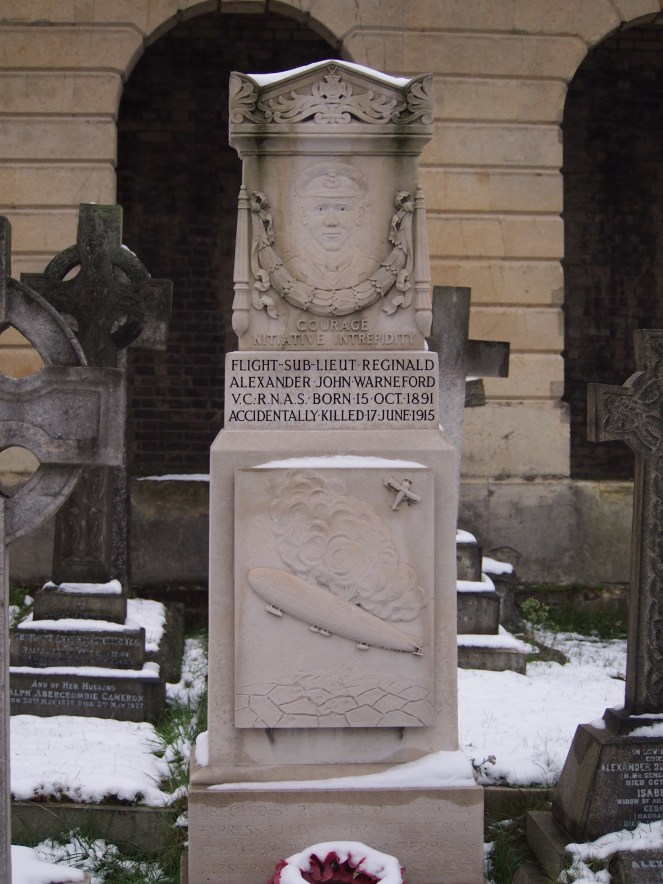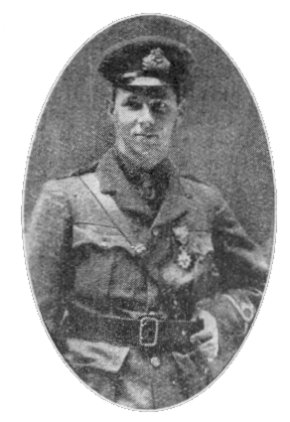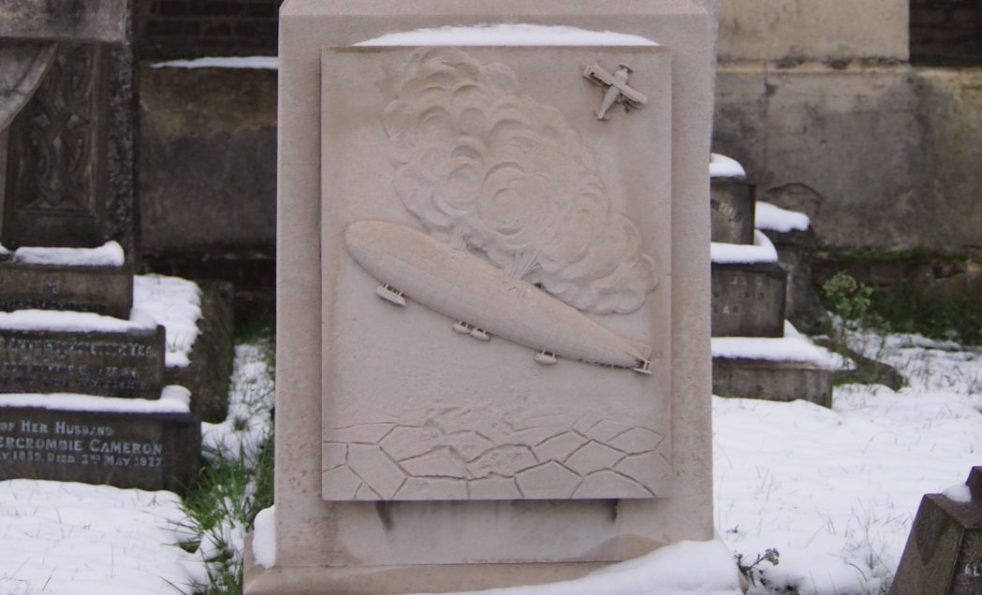
Brompton Cemetery is particularly rich in grand memorials. In the centre of the cemetery, amongst the dark Victorian crosses and angels, stands a paler, more modern memorial. The face of a young man stares out from an impressive, well cared for headstone. Beneath the inscription is a dramatic image of a Zeppelin – one of the monstrous German airships of the First World War – falling to the ground in flames while a comparatively tiny aircraft flies to safety. The headstone, which occupies a prominent spot in the cemetery, commemorates the bravery of one of the British Armed Forces’ first heroes of aviation – Flight Sub-Lieutenant Reginald Alexander John Warneford.

Born in India, Reginald Alexander John Warneford – known as Rex – began to train as a pilot with the Royal Navy Air Service in early 1915. By all accounts he was confident – sometimes over confident – and although he was a skilled pilot his superiors were concerned at his lack of discipline. His commander was quoted as saying that “This youngster will either do big things or kill himself”. After gaining his wings in May 1915, Rex was stationed in Dunkirk and began his flying career in earnest. His bravery quickly became obvious, and he soon made a name for himself as a daring pilot who chased enemy aircraft and attacked enemy targets on the ground.
On 7th June 1915, Rex was able to destroy an enormous German Zeppelin. The bombs that Rex dropped to cause the Zeppelin to explode also caused his plane to fly out of control for a few moments, with some damage being sustained. Rex was forced to land in enemy territory, where he was able to to repair his aeroplane and take off again for safety.

Within thirty six hours of downing the Zeppelin, Rex was awarded the Victoria Cross – the highest possible military honour for gallantry. He was also awarded the French Légion d’honneur. Sadly, he was killed in an accident only days later whilst flying over France with an American journalist. He was just 23 years old. His death, so soon after he was awarded a VC, caused a great outpouring of grief.

Thousands of people attended Rex’s burial, with full military honours, at Brompton Cemetery. The beautiful memorial that marks Rex’s grave today was paid for by the readers of the Daily Express, who donated money to “commemorate [Reginald’s] heroic exploits in destroying a Zeppelin airship near Ghent on June 7, 1915.” As well as the dramatic image of the Zeppelin falling to the ground in flames, the memorial also has two upside down torches – a symbol meaning “life extinguished” often found on Victorian memorials – flanking Rex’s portrait and the Victoria Cross is incorporated into the design at the top. It is a beautiful and striking memorial to one of the first heroes of British military aviation.
References and further reading
Lieutenant Warneford’s Great Exploit http://www.iwm.org.uk/collections/item/object/5758
The impressive headstone over the grave of Flight Sub-Lieutenant Reginald Warneford VC, RNAS, in Brompton Cemetery has been refurbished, http://www.victoriacross.org.uk, 2nd September 2009 http://www.victoriacross.org.uk/bbwarnef.htm
The Zeppelin is Down, Raul Colon, 6th July 2007 http://www.aviation-history.com/articles/zeppelin.htm
Reginald Alexander John Warneford, The London Dead, 22nd October 2013 http://thelondondead.blogspot.co.uk/2013/10/reginald-alexander-john-warneford.html


We did a post in him too – did you know the British Pathé website has a video of his funeral? http://cemeteryclub.wordpress.com/2014/08/04/the-uncomfortable-hero/
LikeLike
Oooh, thank you – I hadn’t seen the Pathé newsreel.
I also love how neat and bright all the gravestones are on the picture of Rex’s funeral!
LikeLiked by 1 person